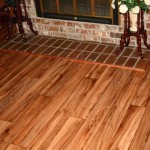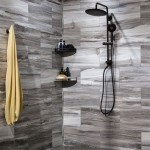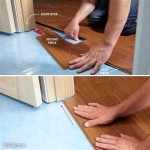What is the Hardest Engineered Wood Flooring?
Engineered wood flooring has become an increasingly popular alternative to solid hardwood flooring, offering a balance of aesthetic appeal, durability, and cost-effectiveness. However, not all engineered wood floors are created equal. The hardness of the flooring significantly influences its ability to withstand daily wear and tear, resisting scratches, dents, and other forms of damage. Determining the "hardest" engineered wood flooring involves considering several factors, including the species of wood used in the wear layer, the construction of the plank, and the Janka hardness rating. This article will delve into these aspects to provide a comprehensive understanding of the factors that contribute to the hardness of engineered wood flooring.
The wear layer, or the top layer of real wood veneer, is the most critical factor in determining the hardness and overall durability of engineered wood flooring. The species of wood used for the wear layer directly correlates to its resistance to indentation and abrasion. Harder wood species will naturally perform better in high-traffic areas and households with pets or children. Therefore, when evaluating the hardness of engineered wood, starting with an examination of the wood species used in the wear layer is essential.
The Importance of the Wear Layer Species
The Janka hardness test is the industry standard for measuring the resistance of wood to indentation. This test measures the force required to embed a steel ball (0.444 inches in diameter) to half its diameter into the wood. The resulting measurement is expressed in pounds-force (lbf) or kilograms-force (kgf). A higher Janka rating indicates a harder, more dent-resistant wood. While the Janka hardness rating primarily applies to solid wood, it provides a valuable benchmark for comparing the relative hardness of different wood species used in the wear layer of engineered flooring.
Brazilian Walnut, also known as Ipe, is often cited as one of the hardest wood flooring options, possessing a Janka hardness rating of approximately 3680 lbf. This exceptional hardness makes it incredibly resistant to scratches and dents, making it an excellent choice for high-traffic areas and commercial applications. However, Brazilian Walnut can be considerably more expensive than other wood species, and its dark color may not be suitable for all design aesthetics.
Other notably hard wood species frequently used in engineered flooring include Hickory (Janka rating around 1820 lbf), Hard Maple (Janka rating around 1450 lbf), and Santos Mahogany (Janka rating around 2200 lbf). Hickory offers a good balance of hardness and affordability, while Hard Maple provides a more subtle grain pattern and lighter color palette. Santos Mahogany, with its reddish-brown hue and considerable hardness, is another durable and aesthetically pleasing option.
In contrast, softer wood species like Pine (Janka rating around 380 lbf) and Cherry (Janka rating around 950 lbf) are more susceptible to dents and scratches. While engineered flooring with a Pine or Cherry wear layer can still be beautiful, it is generally not recommended for high-traffic areas or households with pets. These softer woods require greater care and maintenance to prevent damage.
It is important to note that the Janka hardness rating is not the only factor to consider. The density of the wood also plays a role in its overall durability. A denser wood, even with a slightly lower Janka rating, may still offer superior resistance to wear and tear compared to a less dense wood with a higher Janka rating. Therefore, consulting with a flooring professional and considering the specific characteristics of the wood species is crucial for making an informed decision.
The Influence of Plank Construction
The construction of the engineered wood plank also contributes to its overall hardness and stability. Engineered flooring typically consists of multiple layers of wood veneer or plywood that are bonded together. The core layers beneath the wear layer provide structural support and help to resist warping and expansion due to changes in humidity. A thicker and more robust core can enhance the overall durability and impact resistance of the flooring.
Engineered flooring with a multi-ply core is generally considered to be more stable and durable than flooring with a less complex core structure. The increased number of layers and the cross-directional layering of the plys help to distribute stress and minimize the effects of moisture. This improved stability can indirectly contribute to the perceived hardness of the flooring by preventing gaps and unevenness, which can make the surface more vulnerable to damage.
The thickness of the wear layer itself also impacts the longevity and durability of the flooring. A thicker wear layer allows for more sanding and refinishing over the lifespan of the floor, enabling the removal of scratches and dents. While sanding and refinishing cannot technically increase the hardness of the wood, it can restore the floor to its original condition and extend its usable life, thus enhancing its long-term value and perceived durability.
Some engineered wood flooring products incorporate a high-density fiberboard (HDF) core. HDF is a composite material made from compressed wood fibers and resins. HDF cores can provide excellent dimensional stability and resistance to moisture, making them suitable for use in areas with fluctuating humidity levels. However, the impact resistance of HDF cores can vary depending on the density and quality of the material used. Therefore, it is essential to research the specific characteristics of the HDF core when evaluating the overall durability of the flooring.
The bonding adhesives used in the construction of the engineered wood plank can also affect its durability. High-quality adhesives ensure a strong and lasting bond between the layers, preventing delamination and improving the overall structural integrity of the flooring. Flooring with weak or substandard adhesives is more prone to damage and may not withstand the stresses of daily use as effectively.
Considering Finish and Maintenance
The type of finish applied to the engineered wood flooring plays a significant role in its resistance to scratches, stains, and wear. A durable finish can protect the wood from surface damage and maintain its appearance over time.
Polyurethane finishes are a popular choice for engineered wood flooring due to their durability and resistance to abrasion. Polyurethane finishes are available in various sheens, from matte to high-gloss, allowing for customization of the floor's appearance. However, polyurethane finishes can be prone to scratching, particularly in high-traffic areas. Regular cleaning and maintenance are essential to preserve the integrity of the finish.
Aluminum oxide finishes are known for their exceptional hardness and scratch resistance. Aluminum oxide is a ceramic material that is incorporated into the finish to provide enhanced protection against wear and tear. Engineered wood flooring with an aluminum oxide finish is often a good choice for high-traffic areas and households with pets or children.
Oil-based finishes penetrate the wood and provide a natural, matte appearance. Oil-based finishes offer good water resistance and can be easily repaired with touch-up applications. However, oil-based finishes generally require more frequent maintenance than polyurethane or aluminum oxide finishes.
The best method to maintain any engineered wood floor is regular cleaning with appropriate cleaning products to prevent buildup and subsequent damage. Using a floor cleaner that is designed specifically for engineered wood can help to prolong the life of both the finish and the wood itself. It is also essential to use floor protectors under furniture legs to prevent scratches and dents, and to promptly clean up spills to prevent staining.
Ultimately, selecting the "hardest" engineered wood flooring involves considering a combination of factors, including the species of wood used in the wear layer, the construction of the plank, and the type of finish applied. While Brazilian Walnut is often cited as one of the hardest options, other wood species like Hickory and Santos Mahogany offer a good balance of hardness and affordability. A well-constructed plank with a durable finish, combined with proper maintenance, will ensure the longevity and beauty of any engineered wood floor.

Best Engineered Hardwood Floor For Scratch Resistance Lifecore Flooring S

Hickory Engineered Prefinished Stained Ranchero Random Width Planet Hardwood

What Is The Hardest Wood Flooring Ambience Hardwood

Unveiling The Indestructible Discover Toughest Hardwood Flooring Solutions And Design

Wood Flooring Comparison Hardwood Vs Laminate Engineered Free Samples

Hickory Vs Oak What To Choose From The Forest Llc

Hickory Engineered Prefinished Stained Gaucho Random Width Planet Hardwood

3 4 X 6 Talon Engineered Natural Wb Hickory Matte Hardwood Cabinets To Go

Walnut Engineered Wood Flooring 800 Jpg

Which Hardwood Floors Are The Hardest Portland Flooring
Related Posts








